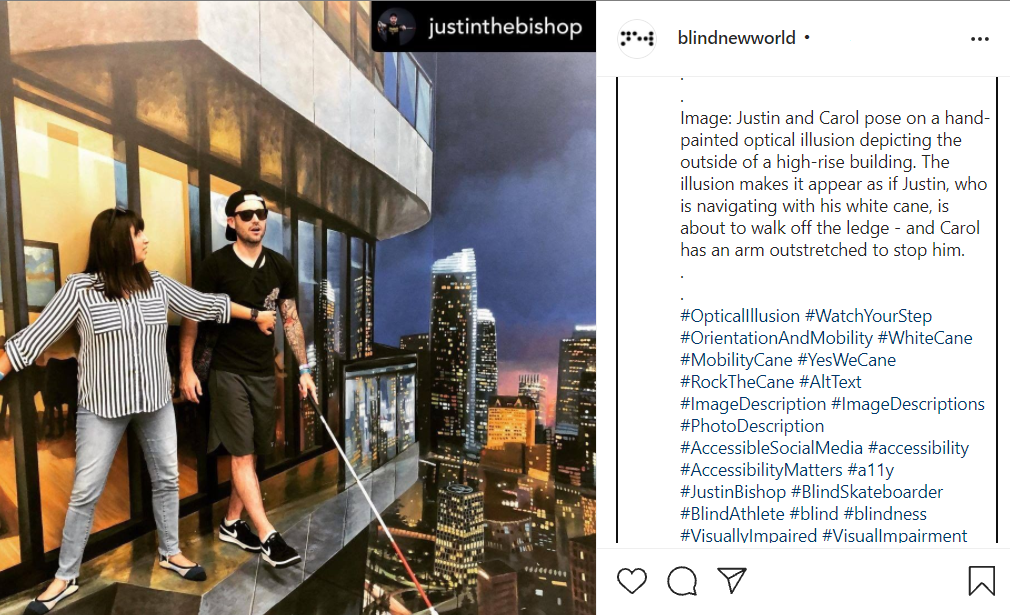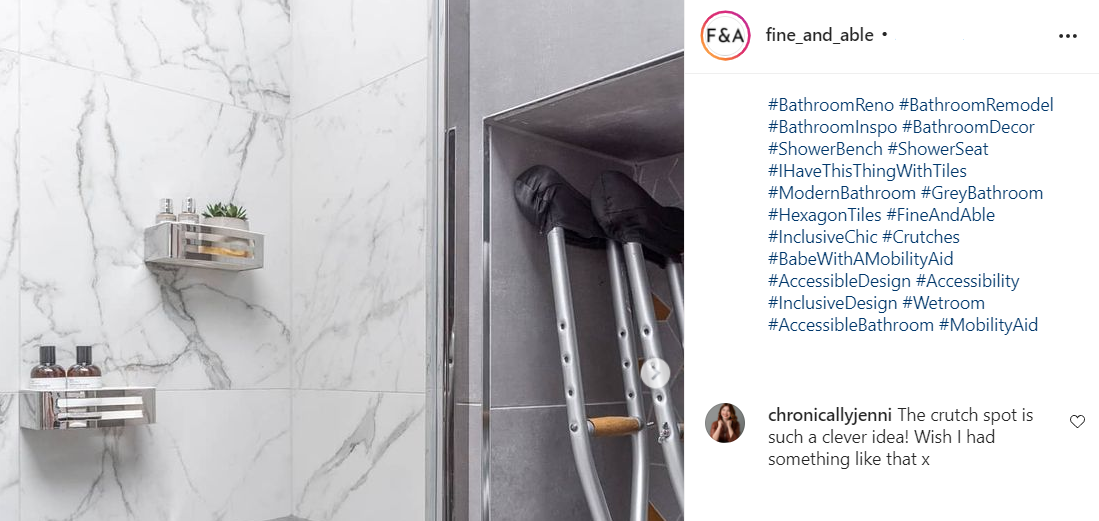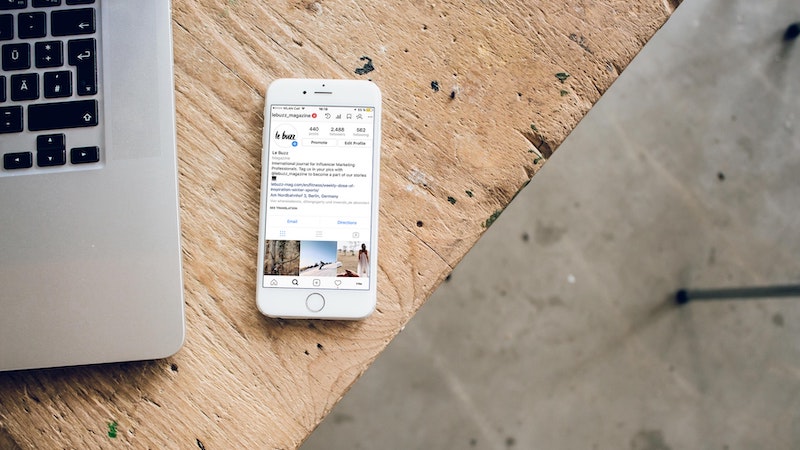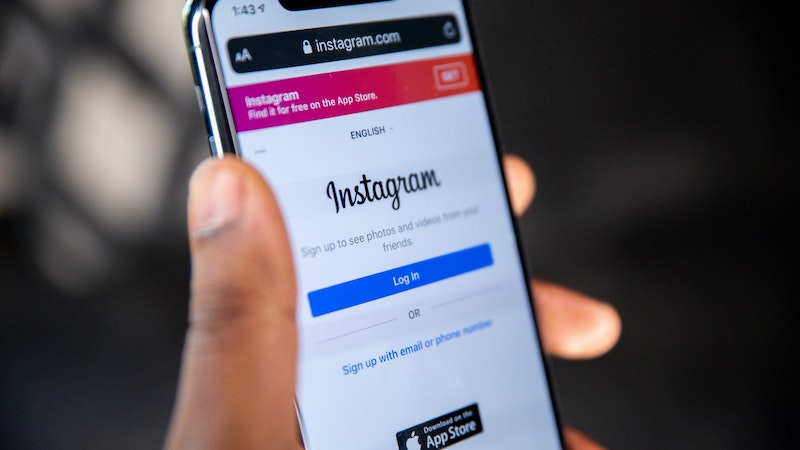Storrito is your autopilot forInstagram Stories
How to Make Your Instagram Account More Accessible—and Why It Matters
Making sure your Instagram account is accessible will not only open up your Instagram account to more people, it can also benefit your business. In the following, we’ll explain how to make your Instagram account more accessible, and why doing so is important.
Social media is meant for sharing content and interacting with people all around the world. In practice, however, people with disabilities are often excluded from participating on social media. In some cases, it’s because creators or businesses simply didn’t consider making their posts more accessible. In others, it’s because platforms are not set up to be accessible.
Instagram wanted to change this on their end and in 2018, the company introduced two new features to make it easier for people with visual impairments to use the photo platform. First, Instagram added an automated alternative text feature that allows screen readers to read descriptions of photos. Second, Instagram added a custom alternative text feature which allows users to manually add alternative text descriptions to the pictures they upload to the platform.
With these changes, Instagram was hoping to help people with visual impairments: “With more than 285 million people in the world who have visual impairments, we know there are many people who could benefit from a more accessible Instagram.”
Why is it important to have an accessible Instagram account?
Having an inclusive approach on Instagram is not just the right thing to do. It can also create a stronger sense of community among your followers and increase your engagement.
Accessible content also ensures that your message can reach more people. Studies even show that running an inclusive business can increase revenue by 19%. So, making your Instagram account more accessible is definitely worth it, and it doesn’t even take a lot of work!
How to make your posts more accessible on Instagram
There are several ways to make your posts on Instagram more accessible.
Use Instagram’s manual alt text option
The first and most obvious step is to use Instagram’s manual feature for alternative text. The alt text is the description of an image that is read by screen readers for people with visual impairments. Unlike the caption, the alt text is not immediately visible to users. Websites usually provide a special field for alt descriptions.
On Instagram, you can find the alt text feature under your advanced settings when you start a new post.
- Start a new post, and when you have finished adding filters, go to advanced settings at the bottom of your screen.
- Here, tap “write alt text.”
- A new screen opens up where you can now add your alternative text.
- Tap the check mark when you are done, and screen readers will now be able to pick up the description.
When writing alt texts, try to be as detailed as possible to make the experience more enjoyable for people with visual impairments. For instance, “a man sitting on a picnic blanket in a park full of flowers” is much more descriptive than “man in a park.”
Consider additional image descriptions
There are cases where users with visual impairments might not be able to use a screen reader when scrolling through Instagram. In order to increase accessibility for them too, consider adding your alt image description to your posts. You can just copy your alt text and paste it under your caption, right before your hashtags. You can preface it by adding “alt text” or “image description” before the actual text.

Use “Camel Case” for your hashtags
Using the “Camel Case” style for writing your hashtags is an easy way to make your posts more accessible. It means that you capitalize the first letter of every new word in your hashtags, like #AccessibleForEverybody or #SocialMedia. If you just use lowercase letters, screen readers will read your hashtag as one word, which can be very confusing for listeners.

Additional tip: you can add the hashtags as comments on your posts instead of directly under your post description. This not only makes your posts look less cluttered, it’s also a better option for screen reader users. Otherwise, each hashtag is read by the screen reader as part of your post, which can get very tiring, especially if you use a lot of tags. If you place them in a separate comment, Instagram’s algorithm will still pick up the hashtags, and your posts will be easier to digest for people with screen readers.
Don’t use too many emojis
Too many emojis can be annoying for any user, but for users with assistive reading tools, they pose an additional challenge because screen readers will read the title of every single emoji out loud. So, if you include 30 heart emojis, some users will have to listen to their screen reader say “heart emoji” 30 times.
Don’t forget about your videos and stories
While Instagram doesn’t offer any options for alt texts for videos or stories, there are still ways for you to make them more accessible. Keep in mind that videos are a challenge not only for visually impaired people but also for people with hearing impairments.
Add a video transcript
Start by adding descriptive captions to your videos that explain in short what is happening in the clip. Subtitles in the videos are also a great help for anybody who has difficulties hearing, and they can also be useful for users who want to watch the videos in public without turning on the sound.
However, remember that screen readers do not pick up subtitles. Therefore, for longer videos, we recommend including a more detailed description of the video content under your post. If you want to go the extra mile, consider providing a full transcript of the video under your post.
Add your story content to your feed
Unfortunately, Instagram Stories doesn’t currently support screen readers, which makes stories particularly hard to access for people with disabilities. However, there are a few things you can do to optimize your stories for people who use assistive technology.
- Use large font.
- Consider high contrast text options.
- Highlight text with bright colors.
- Include links to websites that support screen readers, and give more people access to your content.
- Add subtitles to your video stories.
- Re-post important announcements in your feed to give more people a chance to access the information.
Schedule your content to make it more accessible
As you can see, it only takes a few tweaks to make your Instagram posts more accessible. However, even though it’s not difficult to make your content more accessible, it can be an easy oversight if you are posting something very quickly on the go. While this can’t always be avoided, try to plan your posts in advance as much as you can. It will give you more time to optimize your posts for all audiences.
Scheduling tools such as Storrito can help you with this. Storrito is a free web tool for creating, editing, and scheduling Instagram stories. You can use Storrito on any device and from any location. It’s also a collaborative tool, which means that multiple users can access the content and work on a post together. Since Storrito allows you to access most features that you know and love on Instagram Stories, it will make it very easy to create more accessible stories as well. Try it out for free now!
Ready to schedule your stories?
Tools
- Auto Post Instagram Stories
- How to Upload a Video to Instagram Story from PC
- Schedule Instagram Stories with the Link Sticker
- Upload and post Instagram Reels from PC
- Schedule Instagram Stories
- Can you schedule Instagram stories? Yes, with Storrito.com! (Here's How)
- Instagram Story Planner (Scheduler)
- Schedule Facebook Stories from PC
- Instagram Story Maker Online
- How to schedule Instagram Reels
- How to add a story in Instagram from PC or Mac?
- Post Instagram Stories from PC
Subscribe to our newsletter
Be the first to know when we're adding new features and releasing new updates!


